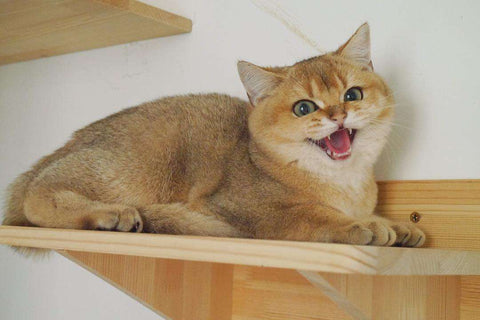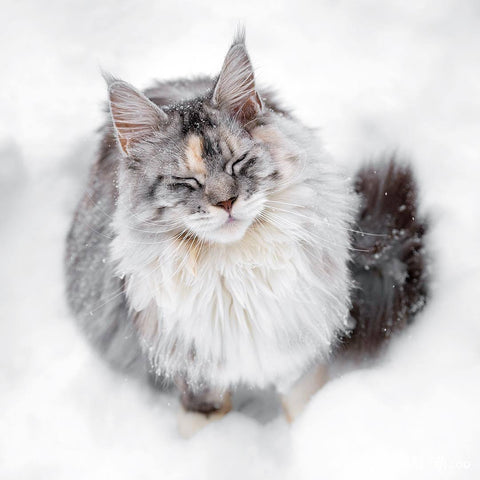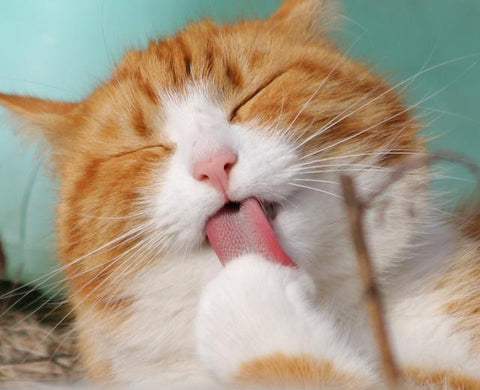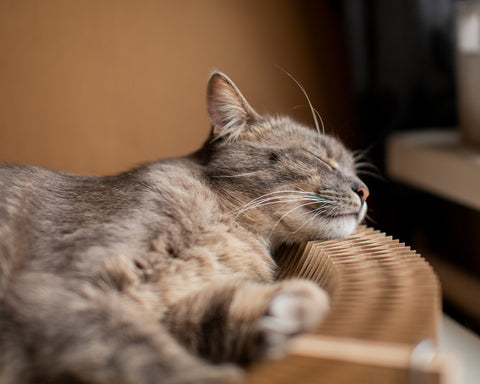Like humans, obesity in cats is a common problem. Unfortunately, the prevalence of feline obesity seems to be getting worse, but it has never improved.
Many veterinarians and parents have tried to achieve weight loss through traditional feline diet recipes (this type of diet is usually a high-fiber/low-fat nutritional structure), but found that this method is frustrating—it usually fails to achieve significant results. Weight loss effect.
Another way to treat (prevent) overweight and obesity in cats is based on our understanding of cats’ basic nutritional needs and their feeding behavior.
In fact, the way we actually feed cats and their food are often contrary to "ideal feline feeding methods and food".
Indoor cats usually consume dry food (high energy, high carbohydrate) freely, and the energy provided by dry food often exceeds the standard (beyond the actual needs of the cat). For outdoor cats, they must keep their bodies healthy and thin in the wild in order to successfully forage.
For indoor cats, they are accustomed to sedentary sitting, ready-made food, and lack of a lot of physical activity, so they do not need the same physical conditions as wild cats. Like other species, free intake of dry food and lack of exercise are the main culprits for obesity (or overweight) in indoor cats.

Obesity and diet
In the development and treatment of obesity, the role of carbohydrates in the diet is a factor that has to be considered. This is not because there is a direct connection between carbohydrates and fats. The form is stored), but because of the impact of carbohydrates on protein levels in the diet.
The higher the concentration of carbohydrates in the diet, the lower the protein intake, which is lower than the requirement. We should never forget that cats were designed to preferentially use protein and fat as energy sources during evolution, and cats do not need any carbohydrates in their diet.
Cats need protein as a source of energy for metabolism. Therefore, with an average digestibility, a diet with insufficient protein content will cause a decrease in muscle mass or symptoms of muscle wasting (the body will consume its own protein reserves as a source of nutrition and energy ). The decrease in net muscle content will cause the metabolic rate to become lower, thereby exacerbating weight gain.

Weight loss food can cause muscle atrophy
Traditional weight loss plans include feeding energy-restricted foods (ie, weight loss food), such as low-fat, low-protein, high-carbohydrate, and high-fiber diets. However, although these diets may cause cats to lose weight, they have an adverse effect on their health because the nature of cats’ consumption of protein as their primary energy source will not change.
A truly successful weight loss program is to reduce the amount of fat in the cat's body while maintaining a lean body mass.
We must remember that lean body mass is the driving force of basal energy metabolism. Loss of fat-free body mass is the main reason for weight rebound, because appetite is not reduced and satiety is not achieved.

A high-protein, low-carbohydrate diet is the best choice
Several recent studies have evaluated the use of a high-protein, low-carbohydrate diet (with a protein content of 45% or higher) to reduce cat weight. In these studies, cats lost weight while maintaining their lean body mass.
Importantly, high-protein, low-carbohydrate canned food not only keeps these cats' weight loss down, but also helps reduce the cat's desire to eat without interruption. This is simply because the cat’s appetite is more easily satisfied when fed canned or raw meat foods than when fed dry foods containing fiber.
Dry food must be extruded at high temperature to form "small biscuits", so carbohydrates must be added during the cooking process. Therefore, it is difficult for dry food to meet the low-carbohydrate content requirements. In addition, many of the high-protein and low-carbohydrate dry foods that can be bought are not low-calorie foods, so it is very easy to cause cats to consume too many calories, including too many protein calories, which can also cause cats to gain weight or lose weight. .
In this case, the best commercial diet that can achieve high protein, low carbohydrate and control calorie intake is none other than canned food or a nutritionally balanced raw meat diet. But remember, even if you are feeding canned food, it does not mean that you are feeding high-protein, low-carbohydrate food-you have to read the product label to get the true information-and it does not mean the food you are feeding It belongs to high-quality protein.

Stop ad libitum
An important part of weight loss is to remember that all diets are counted in calories. Even if they are fed a high-protein, low-carbohydrate diet, most indoor cats cannot "feed freely" because if they consume too much calories, they will become obese or remain obese.
The food allocated to cats every day should be composed of a variety of small amounts of food to mimic the cat’s natural eating strategy, which is to hunt and catch about 10 small prey per day. This also increases the thermal effect of food, increases the metabolic rate, and helps cats lose weight.

Calorie calculation for weight loss
A key point for obesity prevention or treatment is how to balance the equations of energy intake and energy expenditure. For indoor cats, due to lifestyle reasons, the amount of exercise is reduced, and limiting energy intake has become the most important point to prevent or treat obesity. Most indoor cats do not need food that exceeds their resting energy requirements, namely RER, to meet their daily nutritional needs.
For a cat weighing about 5 kg, its resting energy requirement is about 180-200 kcal/day.
Very obese cats may need to reduce their intake by 20% to 40%, or only consume 60-80% of RER to achieve weight loss. Therefore, for a cat of about 7.5 kg and a target weight of 5 kg, it may be necessary to reduce the caloric intake to 120-130 kcal per day.
The key is to set a target calorie intake and ensure that you are fed high-protein food to maintain the cat’s body muscle mass and prevent protein malnutrition. Weigh the cat every month and adjust the amount of food according to the weight loss. supply.
Low-fat, high-fiber diets can achieve the goal of energy restriction, but most of the protein content in these diets is not enough to maintain muscle mass. This loss of muscle mass will lead to an unhealthy weight loss and a tendency to violently rebound, that is, a loss of muscle mass will always lead to rapid weight gain again.
High-protein, low-carbohydrate, and low-fat diets are ideal for cats to lose weight: they help maintain muscle mass while limiting energy sources to reduce fat. However, partial control is the ultimate key to controlling energy intake.
The easiest way to feed a high-protein, low-carbohydrate diet while achieving partial control is to feed canned food or a complete raw meat diet with supplements. For cats that do not eat canned or raw food, there are only a few varieties of high-protein, low-fat, and low-carbohydrate dry cat food
There are options, but these foods should be selected for weight loss programs only when necessary.




























